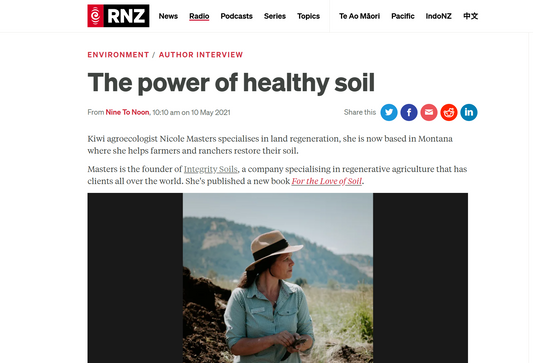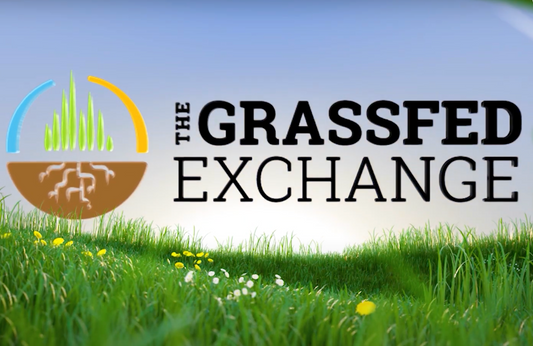Research into all of these herbicides will reveal negative impacts on the soil biome, ecosystem and human health. Glyphosate was a tool that farmers and chemical producers exploited and heavily abused. Looking out an aircraft window in spring and autumn is a sobering experience, revealing farming landscapes checkerboarded yellow with glyphosate right across the planet.
Glyphosate is being delivered into the food chain, from “Round-up Ready” crops (which enable liberal dousing onto crops), crop desiccation before harvest and the New Zealand practice of feeding animals on sprayed fields. Glyphosate is now in the rainfall, rivers, and in the US, over 90% of the human population its in their blood. New research has found a strong link between Glyphosate and algal blooms. With links to autism, birth defects and cancers there is increasing scrutiny. Eventually this abuse was going to catch up and be revealed to the public.
Glyphosate over-use has been detrimental to farmer bottom lines beyond the increasing impact from herbicide resistant weeds. Glyphosate acts as an antibiotic and binds to minerals, reducing soil biodiversity essential for soil physical health and plant and human nutrition. For producers interested in resilient farming systems and reducing inputs there are a number of options that don’t involve reaching for bigger hammers.
A heavy reliance on herbicides for weed control has helped create linear thinking processes that make it difficult to see alternative options for weed control without glyphosate. How can you shift from this weed control and killing focus to an integrated weed management approach that promotes life in the farming system instead?
It can feel daunting to consider farming with minimal herbicides, however consider what benefits you would see on your farm if you stopped using glyphosate. Outcomes such as improved soil and plant health, improved nutrient availability, rainfall use efficiency, increased natural bio-controls, and lower costs of production; in turn lifting the profitability of your business.
Alternative opportunities for weed management open up when you begin to see the ecological niches weeds fill in the system and how they interact with their environment. Understanding how deep rooted weeds recycle nutrients from deep down in the soil profile making them available for shallow rooted plants, how low phosphorus soils favour broadleaf weeds and soils low in calcium favour grasses can inspire us to look for ways to use weeds rather than eradicate them.
Weeds are useful for increasing biodiversity in farming ecosystems and provide useful habitat for beneficial insects. A 20 year study in Denmark (Andreasen et al, 1996) found that only 20% of weeds in crops affected yield significantly and the other 80% had a beneficial role in providing biodiversity and supporting ecosystem services which included habitat for beneficial insects and mycorrhizal fungi, covering bare soil and keeping beneficial soil microbes alive through root exudates.
Weeds are also useful indicators of soil structural problems or soil nutritional imbalances. This makes it possible to remove weed problems through managing the issue with the soil. Taking a plant tissue test from preferred plant species and a weed species in close proximity can be incredibly revealing. Compare the results to see where they are significantly different. As a general rule the weed will be higher in places where nutrients are functionally low. The only exception for this rule is with sodium and nitrates; when high in weed tissue- soils are high too. ID what your weeds are trying to tell you, then do them out of the job!
As you reclaim these skills and knowledge for managing weeds on your farm it becomes possible to move away from reacting with a herbicide application and focusing heavily on weeds growing in the crop towards a more proactive approach where most weed management efforts are happening before a crop is planted.
When you are ready to take the next steps consider the following approach:
- Identify and get to know your weeds. There are a number of resources (listed in the references) that can help you learn more about an individual weed’s function in your landscape.
- Tissue test a preferred plant species and a weed species in close proximity. Compare where they are significantly different.
- Monitor and record which weeds are a problem in which fields and make a plan to optimise weed suppression.
- Choose the right weed management tools for your unique situation and use a combination of strategies rather than relying on just one.
- Be realistic and allow sufficient time to transition ecologically and economically away from glyphosate as your soil health improves.
- Ongoing monitoring will assist you to see how effective weed management strategies are working during transition as you learn to see weed management with new eyes.
If you’re not quite ready to pull the plug, a no-risk approach to reducing glyphosate is through the use of a carbon buffer. For foliar sprays use a fulvic acid at a rate of 1 part to 5 parts herbicide. You need to reduce your herbicide by at least 30%. The fulvic acid rapidly penetrates leaf surfaces as a plant food, and then supports the bio-remediation of the herbicide after application. It’ll cost you less, you’ll use less and you’ll still be working towards your soil health goals.
Weed management toolkit.
There are a number of tools to choose from in an integrated approach to weed management. Including and certainly not limited to the following:
- Restoring soil health as a priority
- Change the germination signal using biological seed treatments or compost extracts
- Crop rotation
- Cover cropping and/or intercropping such a “peaola”
- Incorporate pasture phases in crop rotations
- Sowing density to leave less open soil for weeds to colonise
- Crop selection to make the most suitable choices with regards to competition and promote allelopathy. Sowing shorter season varieties may mean you can get a crop harvested before weeds go to seed.
- Mulching
- Crimper rolling to make a thick weed suppressant mulch weeds will find it difficult to get through
- Heat treatments eg: Steam weeders, flame weeders
- Mechanical removal including inter row cultivation
- Manual removal
- Using animals to disturb undesirable vegetation
- Farm hygiene
The graph below is an example of comparing tissue tests with a weed to a preferred species. Notice where the tests are significantly different. These are your key nutrients to bring into balance.
| Units | Rye | Capeweed | ||
| Nitrogen | N | % | 2.57 | 2.18 |
| Phosphorus | P | % | 0.21 | 0.24 |
| Potassium | K | % | 2.39 | 2.30 |
| Sulfur | S | % | 0.18 | 0.18 |
| Carbon | C | % | 44.5 | 42.8 |
| Calcium | Ca | % | 0.46 | 1.43 |
| Magnesium | Mg | % | 0.24 | 0.32 |
| Sodium | Na | % | 0.16 | 1.17 |
| Copper | Cu | mg/kg | 6 | 9 |
| Zinc | Zn | mg/kg | 16 | 27 |
| Manganese | Mn | mg/kg | 47 | 59 |
| Iron | Fe | mg/kg | 60 | 88 |
| Boron | B | mg/kg | 4 | 39 |
| Molybdenum | Mo | mg/kg | 0.5 | 0.4 |
| Cobalt | Co | mg/kg | <0.1 | <0.1 |
| Crude Protein | ratio | % | 16.1 | 13.6 |
| Nitrate | N | mg/kg | 62.6 | 133 |
| Ammonium | N | mg/kg | 686 | 407 |
“If you want to make small changes, change how you do things.
If you want to make big changes, you must change how you see things.”
Don Campbell
References:
Andreasen, C; Stryn, H & Streibig, JC (1996). “Decline of the Flora in Danish Arable Fields”. Journal of Applied Ecology 33 (3) British Ecological Society: 619.
McCaman, Jay L (2013) When Weeds Talk. Jay L McCaman.
Smith, D. R., King, K. W., & Williams, M. R. (2015). What is causing the harmful algal blooms in Lake Erie?. Journal of Soil and Water Conservation, 70(2), 27A-29A.
Drzyzga, D., & Lipok, J. (2018). Glyphosate dose modulates the uptake of inorganic phosphate by freshwater cyanobacteria. Journal of applied phycology, 30(1), 299-309.
Park, Alice, 24 October 2017. A Weed Killer Is Increasingly Showing Up in People’s Bodies. Time Magazine.
Pesticide Action Network (2018) Alternative methods to weed management to the use of glyphosate and other herbicides. http://www.pan-uk.org/alternatives-to-glyphosate-in-weed-management/




